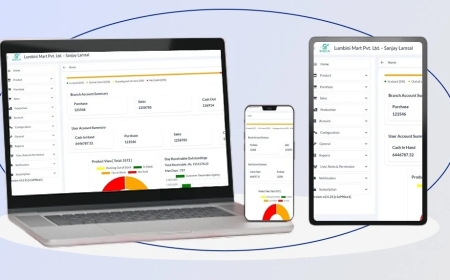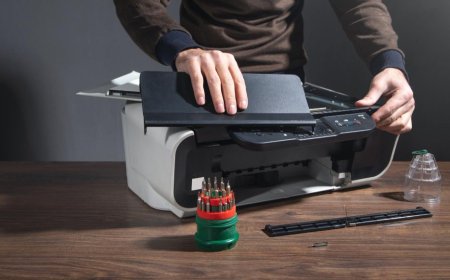How to Set Up Your Bass Guitar for Maximum Playability
Setting up your bass guitar for maximum playability is not only rewarding but also essential for enhancing your musicianship

Setting up your bass guitar properly can dramatically improve its playability, tone, and overall performance. Whether you're a beginner hoping to make your instrument more comfortable to play or a seasoned bassist looking to fine-tune every element, understanding the essentials of a proper setup is key. In this article, well walk you through a comprehensive step-by-step guide on how to set up your bass guitar for optimal performance and comfort.
Why Bass Guitar Setup Matters
Bass guitars, like all stringed instruments, are affected by factors such as string tension, humidity, and hardware alignment. A poor setup can lead to:
-
High action (hard-to-press strings)
-
Fret buzz
-
Poor intonation
-
Inconsistent tone
-
Discomfort during long playing sessions
Conversely, a well-setup bass feels like an extension of your handsresponsive, smooth, and tonally rich.
Tools Youll Need
Before diving into the setup process, make sure you have the following tools:
-
Tuner (clip-on or pedal)
-
Allen wrenches (specific to your bass's truss rod and bridge)
-
Small screwdriver set
-
Ruler or string action gauge
-
Capo
-
Clean cloth
-
Lemon oil or fretboard conditioner (optional)
-
New set of strings (optional but recommended)
Step 1: Clean the Bass and Replace Strings
Before making any adjustments:
-
Remove the old strings if they are worn out.
-
Use a dry cloth to remove dust and grime.
-
Clean the fretboard using lemon oil or a fretboard-specific cleaner.
-
Install new strings, tuning them to pitch.
Tip: Always stretch new strings gently to help them settle and stay in tune.
Step 2: Adjust the Neck Relief (Truss Rod)
Neck relief refers to the slight forward bow in the neck that accommodates string vibration. To check neck relief:
-
Press the first fret (using a capo is helpful).
-
Press the last fret on the E string.
-
Check the gap between the string and the 7th or 8th fret.
A small gap (around 0.010" or a business cards thickness) is ideal. If there's too much or too little gap:
-
Use the correct Allen wrench to adjust the truss rod.
-
Clockwise: decreases relief (straightens the neck)
-
Counter-clockwise: increases relief (adds more bow)
Make small adjustmentsabout 1/8 turn at a timeand allow the neck to settle.
Step 3: Set the Action (String Height)
Action is the height of the strings above the frets. Lower action makes the bass easier to play but may introduce fret buzz if too low.
To adjust:
-
Measure the distance from the bottom of each string to the top of the 12th fret.
-
A common starting point:
-
E string: 2.5mm (0.098")
-
G string: 2.0mm (0.078")
Use the bridge saddle height screws to raise or lower each string accordingly.
Always make adjustments with the bass in playing position for accuracy.
Step 4: Check and Adjust the Intonation
Intonation ensures that your bass stays in tune all the way up the neck.
To adjust:
-
Tune your string to pitch.
-
Play the 12th fret harmonic.
-
Play the fretted 12th note.
-
If the fretted note is sharp, lengthen the string by moving the saddle back.
-
If it's flat, shorten the string by moving the saddle forward.
Use a screwdriver to move the saddle screws on the bridge, and return after each adjustment.
Repeat for each string and be patientintonation adjustments can take time.
Step 5: Adjust Pickup Height
Pickup height affects both volume and tonal clarity. Too close to the strings, and you may get unwanted distortion or magnetic pull; too far, and the sound becomes weak.
To adjust:
-
Press the last fret on the string.
-
Measure the distance between the bottom of the string and the top of the pickup.
-
Recommended starting height:
-
Bass side: 2.5mm (0.098")
-
Treble side: 2.0mm (0.078")
Use the pickup height screws to fine-tune.
Experiment to find the tone you like besthigher pickups for punch, lower for clarity.
Step 6: Final Check and Play Test
After completing your adjustments:
-
Tune the bass again.
-
Play through scales, chords, and fast passages.
-
Listen for fret buzz, tuning inconsistencies, or uncomfortable areas.
-
Make minor tweaks as needed.
Bonus Tips for Better Playability
-
Nut Height: A poorly cut nut can affect tuning and action. If strings sit too high at the nut, consider having it professionally filed.
-
Strap Height: Adjust your strap so your hands fall naturally on the fretboard.
-
String Type: Lighter strings are easier to play; flatwounds provide smoother feel and vintage tone.
-
Professional Setup: If unsure, consider taking your bass to a technician for a pro setup. It can be worth the investment.
Conclusion
Setting up your bass guitar for maximum playability is not only rewarding but also essential for enhancing your musicianship. With just a few tools and some patience, you can transform a tough-playing instrument into a smooth, expressive extension of yourself. Regular maintenance and seasonal adjustments will keep your bass in top condition, allowing you to focus on what matters mostmaking music.





































